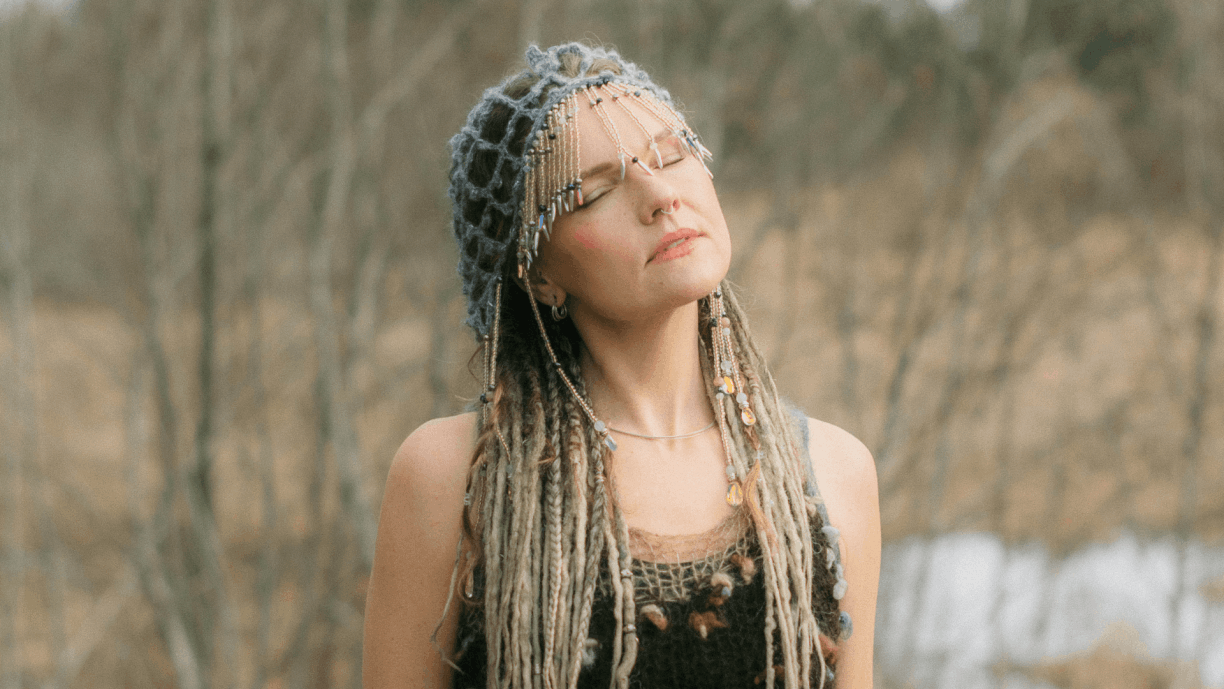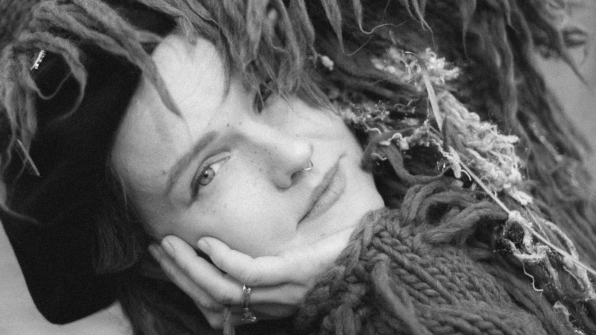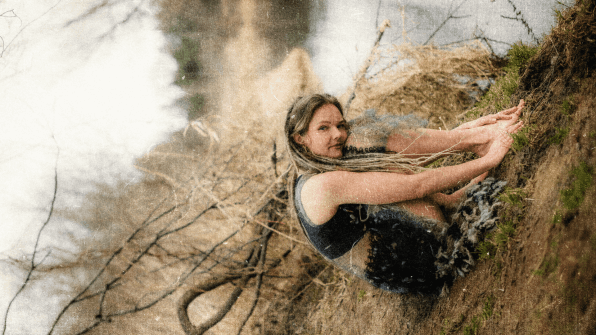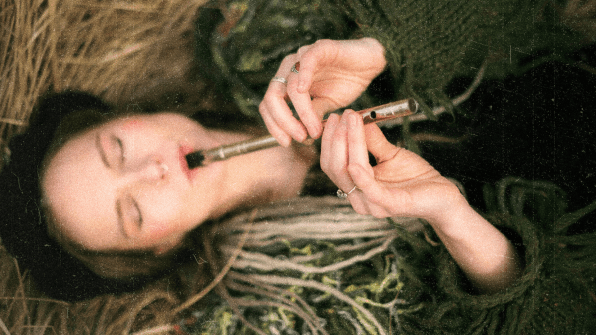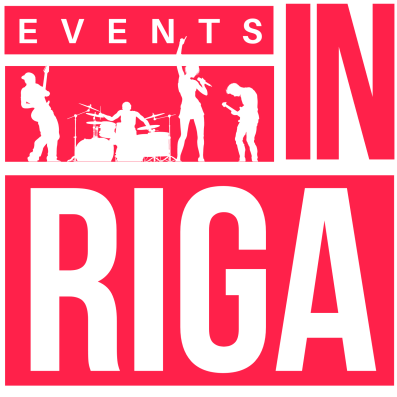What is your "key to happiness," and how do you feel it in your daily life, not just in art?
My key to happiness lies in creation, and not just in the field of art! I also have various creative hobbies, such as knitting and crocheting, which seem to be experiencing a renaissance right now. By the way, I have created most of the elements of my stage persona myself. I also brew kombucha and jun – fermented, super-tasty drinks. Creation is a very broad concept, and I am also fascinated by philosophy. I also call creation the realization that we each create our own reality – this awareness gives the feeling that we are the masters of our lives and allows us to feel the freedom, which is a very important value for me.
What inspires you at the moment?
It’s important to me that what I do is functional and useful, not just entertaining or decorative. That's why, in the past, I often thought of art as an instrument, and I was inspired by things I wanted to pay attention to, such as climate issues. But while working on the album, I realized that it’s also very important to share my authentic energy, that "in the grand scheme," everything is carefully planned – if I want to create music, then the world needs it right now. The creation of music is inspired by combining ancient, traditional elements with new trends, for example, ethno instruments + electronics, which I use in my music.
How would you describe the sound and lyrical message of your debut album "Stāsti par debess ķermeņiem"?
The album is like a mirror image of my authentic self. The sound is very feminine, which also means it’s very changeable, undefinable, elusive, maybe hard to define – at times loud and emotional, at times quiet and introverted, transmitting various emotions. However, the dominant mood is ethereal, sensual, sometimes fragile, and multilayered. The album’s sound blends the organic and electronic worlds.
It was important for me to create an environment where a person (the listener) can breathe slower and deeper. We are so often caught up in speed, rushing to figure out each next step, that we forget – silence is also a value. This music leaves space for that – to be, to feel, to stop. I consciously didn’t follow the trend of making songs shorter. I let them be as long as necessary.
What inspired you to get involved in producing?
Ooo, this is my favorite part of the broad spectrum that today falls under the term "musician." I’ve gotten to know myself well; I know who I am, and I know what I like, so I had a specific vision of how I wanted to hear my music. Collaborating with a producer, there will always be a “black hole” where part of my vision will disappear. So, I rolled up my sleeves and got to work. I put together everything I like, consciously not thinking about formulas and laws of music production, but following my feelings, trying to translate my inner world, showing it as authentically as possible, presenting myself as a solo artist.
I’m also very curious, I constantly enjoy exploring new territories and learning new skills. The production process was my playground, where I found a lot of joy. That said, I’m very open to mutually inspiring collaborations.
Your first produced single "Tuvāk pavasarim" sounded very convincing — have you produced the other tracks on your debut album as well?
Yes. The album consists of two singles released last year and seven new songs, all of which were self-produced. For the very first single “Miljardiem gadu,” we worked with Agnese Rakovska as a co-author of the song and producers Armands Varslavāns and Edgar Vilcāns.
What was the biggest surprise or revelation while working on your first album?
Trusting the process – that is another very important aspect of why I decided to produce the album myself. By doing, doing, and doing, you tend to discover many things, solutions, and surprises that you can’t plan or think of with your mind beforehand! In this process of doing and creating, the song arrangements also emerged, which I wouldn’t have been able to explain to a producer because the solutions came during the process. This doesn’t mean the material would be better or worse, but it means I wouldn’t have surprised myself several times.
If this album were a feeling or a smell – what would it be?
The songs are very different; they tell different stories. The album is structured as a series of sequential stories that take you through all the seasons, much like a woman experiences the seasonal cycle every month. Thus, a bouquet of emotions is experienced. Talking about this cyclical nature is very important to me, because nowadays, when there’s an intense fight for equality, women often strive to, and sometimes succeed in, becoming equal to men; a woman tends to or is forced to forget and disregard her natural rhythm. We are not made to be as constant as men – nature didn’t intend for us to set speed and power records every day.
I often say that my second name is Melancholy, so it’s logical that the album begins with it. It’s characterized by an autumn mood. Then comes the dark winter period, which is heard in the songs “Kolīzija” and “Ceļas frekvences.” After that comes “Tuvāk pavasarim,” which awakens playful joy, and ends with the most energetic “summer songs” – “Paralēlās pasaules” and “Miljardiem gadu.”
How do you know when a song is "ready"? Or is there such a moment?
Yes! When I can no longer focus on the technical things that need improvement and start enjoying the song's vibe, it's close to the finish line! I’m not one of those people who can’t finish a work of art. But I also realize that, perhaps, years from now, when listening, I’ll judge it differently.
You often use natural sounds and household objects – what is the most unusual instrument or sound you’ve used in your music?
Once, I used a midsummer wreath from last year – the rustling of leaves created a delicate shaker effect. But somewhere along the process, this sample disappeared from the final version. It happens – the final versions of songs have strayed very far from their initial sketches. In the song “Miljardiem gadu,” I recorded the voice of my three-year-old child. The song “Ceļas frekvences” features a very unusual instrument – vintage electronic chord organ, found in a second-hand store. My closest instruments are wind instruments, so I’ve built a collection of them. The one that usually catches the most attention is the overtone flute, the futujara – a modern hybrid instrument derived from the traditional Slovak fujara. The futujara gives a very unusual sound to the song “Kolīzija.”
What is your approach to creating music videos? How do you go from an idea to realization?
This is an area where I really enjoy collaborating with other clever minds. I often start with a feeling rather than a specific story – what color, movement, or light resonates with me. Then, I think about how I can use the discovered elements to convey the song's message. I love looking for unusual and new solutions. Often, they lie within some limitations (budget, time), which forces me to think creatively.
If you could go back in time when you were a little girl, what advice would you give yourself?
DO – NOT – BE – AFRAID. Parents, wanting to protect their children, often create the impression that the world is scary and full of threats. And then you end up living “half-way.” Fear is the most common reason why people don’t follow their heart or dreams. These fears are usually illusory.
If you weren’t a musician, what profession would you possibly choose and why?
I am one of those people who can be everything and nothing. As a child, my dream professions were archaeologist, circus performer-acrobat, and ballerina. Growing up, I’ve always been around creative professions. I’m very changeable and fluid – even now, alongside my musician career, I do many things simultaneously: I am a professional graphic designer, a mentor in the music education project “Zvaigznāja klase,” a sound designer in various audio branding projects. My profession is determined by the desire to be useful to society, to bring some value.
What kind of entertainment events do you like to attend and why?
I live outside the city, so peace and quiet are important to me. I often relax and entertain myself in my natural corner – cooking food over a fire, long walks, and deep conversations with close friends. But sometimes, I go to the city (in summer – open-air festivals) to dance properly with my urban tribe. That’s also my "sport." I also really enjoy intimate concerts, art exhibitions, and creative workshops where direct contact with other souls is key.
Where and when can your listeners hear the new album in concert – is there a presentation event planned?
Yes! Everyone is welcome to the album “Stāsti par debess ķermeņiem” presentation concert – celebrations. We will be on stage together with guitarist Jānis Tumpelis and percussionist Einārs Latiševs, who will bring the album's songs to life with even richer sounds.
Event time: June 5, 2025, at 19:00
Venue: “Zvaigznājs,” Tēraudlietuves street 22, entrance D, Riga
More info: www.agnesedzjamko.lv
